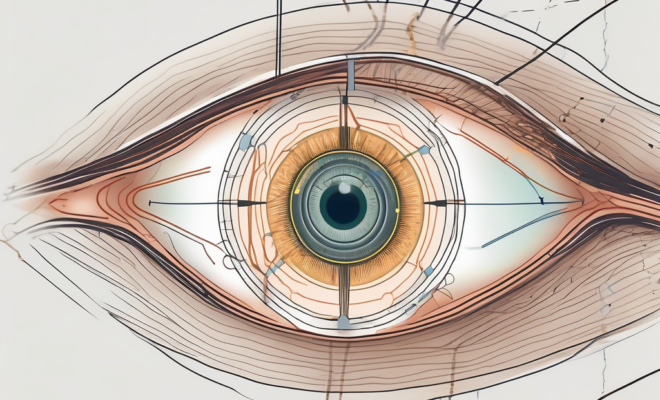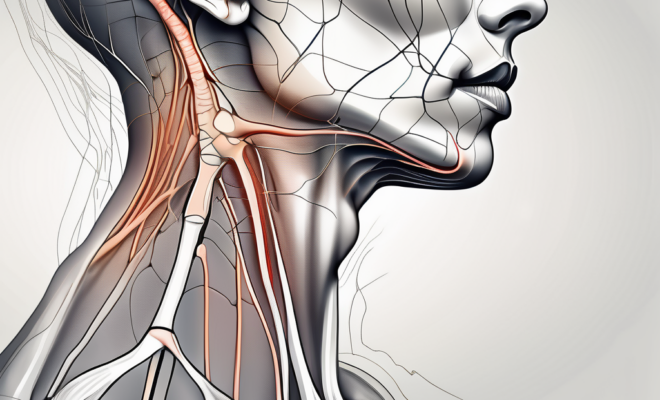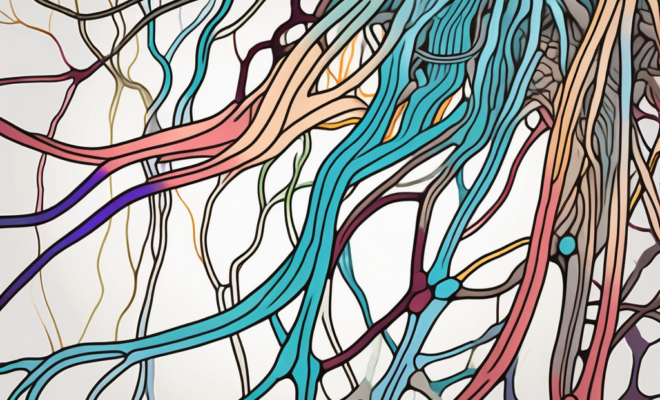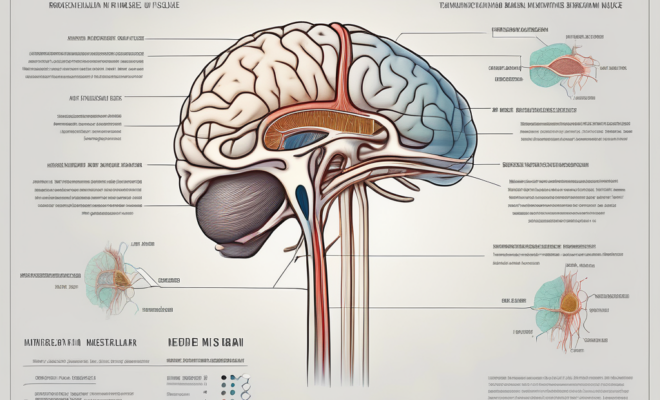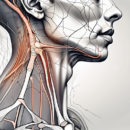Understanding the Vestibulo Cochlear Nerve: Functions and Disorders
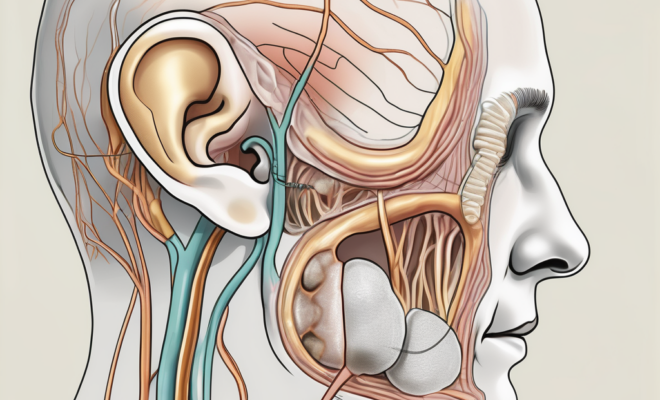
The vestibulo cochlear nerve, also known as the eighth cranial nerve, plays a crucial role in our ability to hear and maintain balance. This intricate nerve has two main components: the vestibular nerve and the cochlear nerve. Understanding its anatomy, functions, and the various disorders that can affect it is essential for comprehending the complexities of the human auditory system.
Anatomy of the Vestibulo Cochlear Nerve
The Vestibular Nerve
The vestibular nerve, a key component of the vestibulo cochlear nerve, plays a vital role in maintaining our sense of balance and spatial orientation. This nerve is a complex network of afferent fibers that originate from the hair cells located in the vestibular apparatus. The vestibular apparatus consists of the semicircular canals, which detect rotational movements of the head, and the otolith organs, which sense linear acceleration and gravity. Together, these structures provide the brain with crucial information about our body’s position in space, helping us navigate our environment with precision and stability.
In addition to its role in balance, the vestibular nerve is also involved in coordinating eye movements to compensate for head motion. This intricate system, known as the vestibulo-ocular reflex, ensures that our gaze remains steady even when our head is in motion. The vestibular nerve plays a crucial role in this reflex by transmitting signals that help synchronize eye movements with head movements, allowing us to maintain clear vision and focus.
The Cochlear Nerve
The cochlear nerve, another integral component of the vestibulo cochlear nerve, is responsible for transmitting auditory information from the cochlea to the brain. The cochlea, a remarkable structure resembling a snail shell, is lined with thousands of hair cells that are finely tuned to different frequencies of sound. When sound waves enter the cochlea, these hair cells vibrate and convert the mechanical energy into electrical signals, which are then relayed through the cochlear nerve to the auditory cortex for processing.
Within the auditory cortex, the electrical signals from the cochlear nerve are decoded and interpreted, allowing us to perceive and make sense of the rich tapestry of sounds that surround us. This intricate process of auditory perception is essential for communication, music appreciation, and overall quality of life. The cochlear nerve’s role in this complex system highlights its significance in our ability to experience and enjoy the auditory world around us.
Functions of the Vestibulo Cochlear Nerve
Role in Hearing
The primary function of the vestibulo cochlear nerve is to transmit auditory information to the brain, allowing us to perceive and interpret sounds. This complex process involves the conversion of sound waves into electrical signals by the hair cells in the cochlea. These signals are then transmitted through the cochlear nerve to the brainstem, where they undergo further processing before reaching the auditory cortex.
Furthermore, the vestibulo cochlear nerve is essential for sound localization, which is the ability to determine the direction and distance of a sound source. This localization is achieved through the brain’s processing of subtle differences in the timing and intensity of sound signals received by each ear. The vestibulo cochlear nerve plays a critical role in this process by accurately conveying these auditory cues to the brain for precise localization of sound sources in the environment.
Role in Balance
In addition to its role in hearing, the vestibulo cochlear nerve plays a crucial role in maintaining balance and equilibrium. The vestibular nerve carries sensory information from the vestibular apparatus to the brain, providing feedback about head position, movement, and changes in acceleration. This information allows the brain to coordinate muscle movements and make postural adjustments, ensuring that we stay upright and stable even when moving or engaging in activities that challenge our balance.
Moreover, the vestibulo cochlear nerve contributes to the vestibulo-ocular reflex, which is responsible for stabilizing the eyes during head movements. This reflex ensures that visual input remains steady and clear even when the head is in motion, enhancing our ability to focus on objects and maintain visual acuity in dynamic environments. The intricate interplay between the vestibulo cochlear nerve, vestibular system, and ocular motor system highlights the multifaceted role of this nerve in facilitating not only hearing but also spatial orientation and visual stability.
Common Disorders of the Vestibulo Cochlear Nerve
Vestibular Neuritis
Vestibular neuritis refers to the inflammation of the vestibular nerve, resulting in symptoms such as severe vertigo, dizziness, and imbalance. This condition is often caused by a viral infection and can be accompanied by nausea, vomiting, and difficulty walking. Vestibular neuritis can significantly impact an individual’s quality of life, making daily activities challenging and even causing anxiety and depression in severe cases.
Individuals experiencing vestibular neuritis may find it challenging to perform simple tasks such as walking in a straight line or even getting out of bed due to the intense dizziness and loss of balance. The inflammation of the vestibular nerve can disrupt the signals sent to the brain regarding spatial orientation, leading to a sensation of spinning or tilting even when stationary. Treatment for vestibular neuritis may include medication to alleviate symptoms, vestibular rehabilitation exercises to improve balance, and lifestyle modifications to reduce triggers for vertigo episodes.
Meniere’s Disease
Meniere’s disease is a chronic condition characterized by recurring episodes of vertigo, fluctuating hearing loss, tinnitus (ringing in the ears), and a feeling of fullness in the affected ear. This disorder is thought to be related to an excess buildup of fluid in the inner ear, which disrupts the normal functioning of the vestibulo cochlear nerve. Meniere’s disease can be debilitating, affecting a person’s ability to hear, maintain balance, and engage in regular activities.
During an episode of Meniere’s disease, individuals may experience severe vertigo that can last for hours, accompanied by sweating, nausea, and vomiting. The fluctuating hearing loss associated with this condition can lead to difficulties in communication and social interactions, impacting both personal and professional relationships. Management of Meniere’s disease often involves a combination of dietary changes to reduce fluid retention, medications to control symptoms, and in severe cases, surgical procedures to alleviate pressure in the inner ear.
Symptoms and Diagnosis of Vestibulo Cochlear Nerve Disorders
Recognizing the Symptoms
The symptoms of vestibulo cochlear nerve disorders can vary depending on the specific condition affecting the nerve. Common symptoms include vertigo, dizziness, hearing loss, tinnitus, and problems with balance. These symptoms can significantly impact a person’s quality of life, causing physical discomfort and emotional distress. It is crucial to recognize and seek medical attention for these symptoms to determine the underlying cause and receive appropriate treatment.
Vestibulo cochlear nerve disorders can also manifest as sensitivity to loud noises, ear fullness, and difficulty understanding speech in noisy environments. Some individuals may experience a sensation of spinning or whirling, known as vertigo, which can be triggered by sudden head movements or changes in position. The onset of these symptoms may be gradual or sudden, and they can fluctuate in intensity, leading to challenges in daily activities and social interactions.
Diagnostic Procedures
Diagnosing vestibulo cochlear nerve disorders typically involves a comprehensive evaluation that includes a medical history review, physical examination, and specialized tests. Audiometry, which assesses hearing ability, and electronystagmography, which measures eye movements, are commonly used tests for evaluating balance and hearing functions. In some cases, magnetic resonance imaging (MRI) may be necessary to visualize the inner ear structures and rule out other potential causes of symptoms.
Additionally, vestibular evoked myogenic potentials (VEMP) testing can help assess the function of the otolithic organs in the inner ear, providing valuable information about the vestibular system’s integrity. Vestibular rehabilitation therapy may be recommended to improve balance and reduce dizziness symptoms in individuals with vestibulo cochlear nerve disorders. By combining various diagnostic tools and therapeutic approaches, healthcare providers can tailor treatment plans to address the specific needs of each patient and enhance their overall well-being.
Treatment Options for Vestibulo Cochlear Nerve Disorders
Medication and Therapy
The treatment of vestibulo cochlear nerve disorders aims to alleviate symptoms and improve overall function. Medications such as anti-vertigo drugs, vestibular suppressants, and anti-nausea medications may be prescribed to help manage symptoms such as vertigo and dizziness. These medications work by targeting specific receptors in the inner ear to reduce the sensation of motion and nausea. Additionally, physical therapy and vestibular rehabilitation exercises can also be beneficial in retraining the brain to adapt to the sensory input disruptions caused by the underlying nerve disorder. These exercises focus on improving balance, coordination, and gaze stability to help patients regain their sense of equilibrium.
Furthermore, cognitive behavioral therapy (CBT) can be a valuable addition to the treatment plan for vestibulo cochlear nerve disorders. CBT helps patients identify and change negative thought patterns and behaviors that may exacerbate their symptoms. By addressing the psychological aspects of the condition, CBT can help individuals better cope with the challenges of living with a vestibular disorder and improve their overall quality of life.
Surgical Interventions
In some cases, surgical interventions may be necessary to treat vestibulo cochlear nerve disorders. Surgical options may include procedures to decompress the vestibular nerve or reduce the excess fluid buildup in the inner ear. Vestibular nerve decompression surgery involves relieving pressure on the vestibular nerve to alleviate symptoms of vertigo and dizziness. On the other hand, endolymphatic sac decompression surgery aims to reduce the fluid pressure in the inner ear to improve balance and reduce the frequency of vertigo attacks.
Cochlear implants, another surgical intervention, can be considered for individuals with severe hearing loss that cannot be adequately managed with traditional hearing aids. These implants bypass the damaged hair cells in the cochlea and directly stimulate the auditory nerve, allowing individuals to perceive sound signals more effectively. Cochlear implant surgery is a complex procedure that requires careful evaluation and post-operative rehabilitation to ensure optimal outcomes for patients with significant hearing impairment.
Prevention and Management of Vestibulo Cochlear Nerve Disorders
Lifestyle Changes
While some causes of vestibulo cochlear nerve disorders cannot be prevented, adopting a healthy lifestyle can help promote overall ear and nerve health. Avoiding exposure to loud noises, practicing good ear hygiene, and taking precautions to prevent head injuries can minimize the risk of developing certain conditions that affect the vestibulo cochlear nerve. Regular exercise, stress management, and a well-balanced diet can also contribute to general well-being and potentially reduce the severity of symptoms.
Regular Check-ups and Monitoring
Regular check-ups with healthcare professionals, including ear specialists and audiologists, are crucial for early detection and management of vestibulo cochlear nerve disorders. These routine examinations can help monitor any changes in hearing ability, balance, or other related symptoms. Prompt medical intervention and appropriate management strategies can significantly improve outcomes and prevent further complications associated with these complex disorders.
Understanding the fascinating functions and disorders of the vestibulo cochlear nerve sheds light on the intricate mechanisms that enable us to hear and maintain balance. With advancements in medical research and technology, we continue to uncover new insights into the complexities of this remarkable nerve. By recognizing the symptoms, seeking timely medical attention, and following appropriate treatment and management strategies, individuals affected by vestibulo cochlear nerve disorders can regain control over their lives and appreciate the wonders of the auditory world.
One interesting aspect of vestibulo cochlear nerve disorders is the impact they can have on a person’s daily life. For example, individuals with these disorders may experience difficulties with spatial orientation and balance, making simple tasks like walking or even standing still a challenge. This can lead to a decreased quality of life and increased risk of falls and injuries. However, with proper management and support, individuals can learn to adapt and overcome these challenges, allowing them to lead fulfilling and independent lives.
Furthermore, it is important to note that vestibulo cochlear nerve disorders can vary in their presentation and severity. Some individuals may experience mild symptoms that are easily managed, while others may face more significant impairments that require ongoing medical intervention. By working closely with healthcare professionals, individuals can receive personalized care and treatment plans that address their specific needs and goals. This collaborative approach ensures that individuals receive the best possible care and support throughout their journey towards better ear and nerve health.



